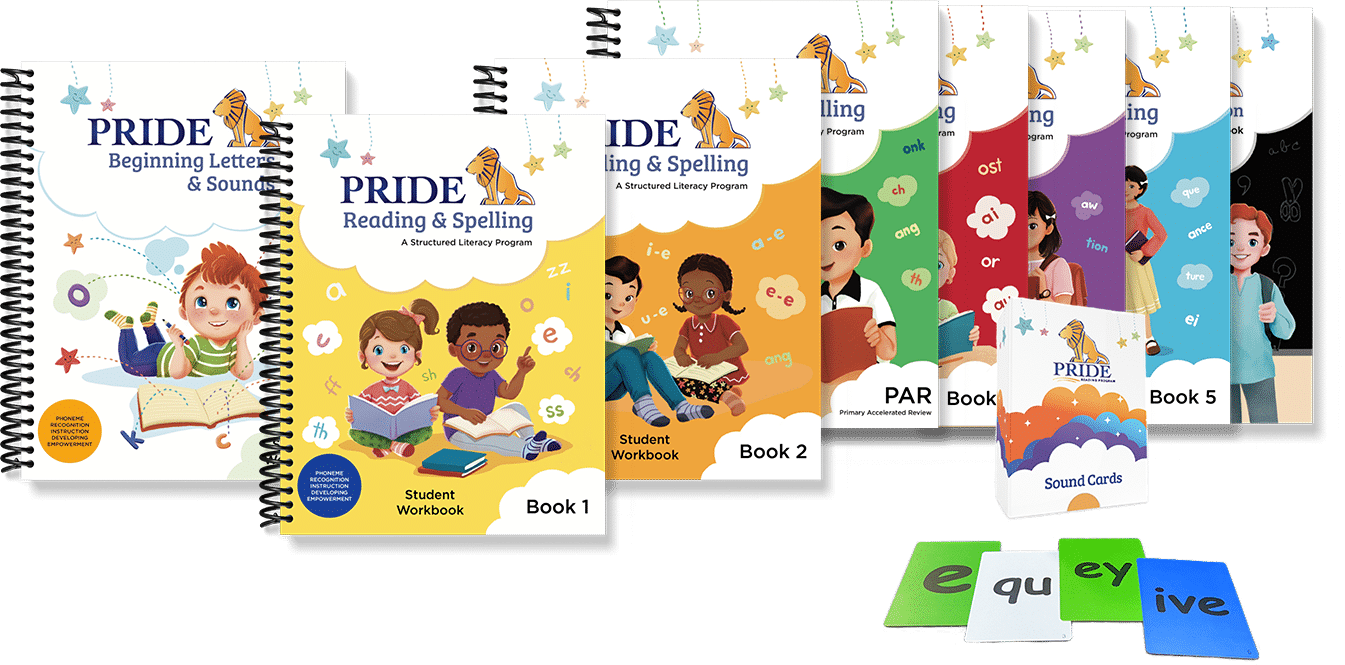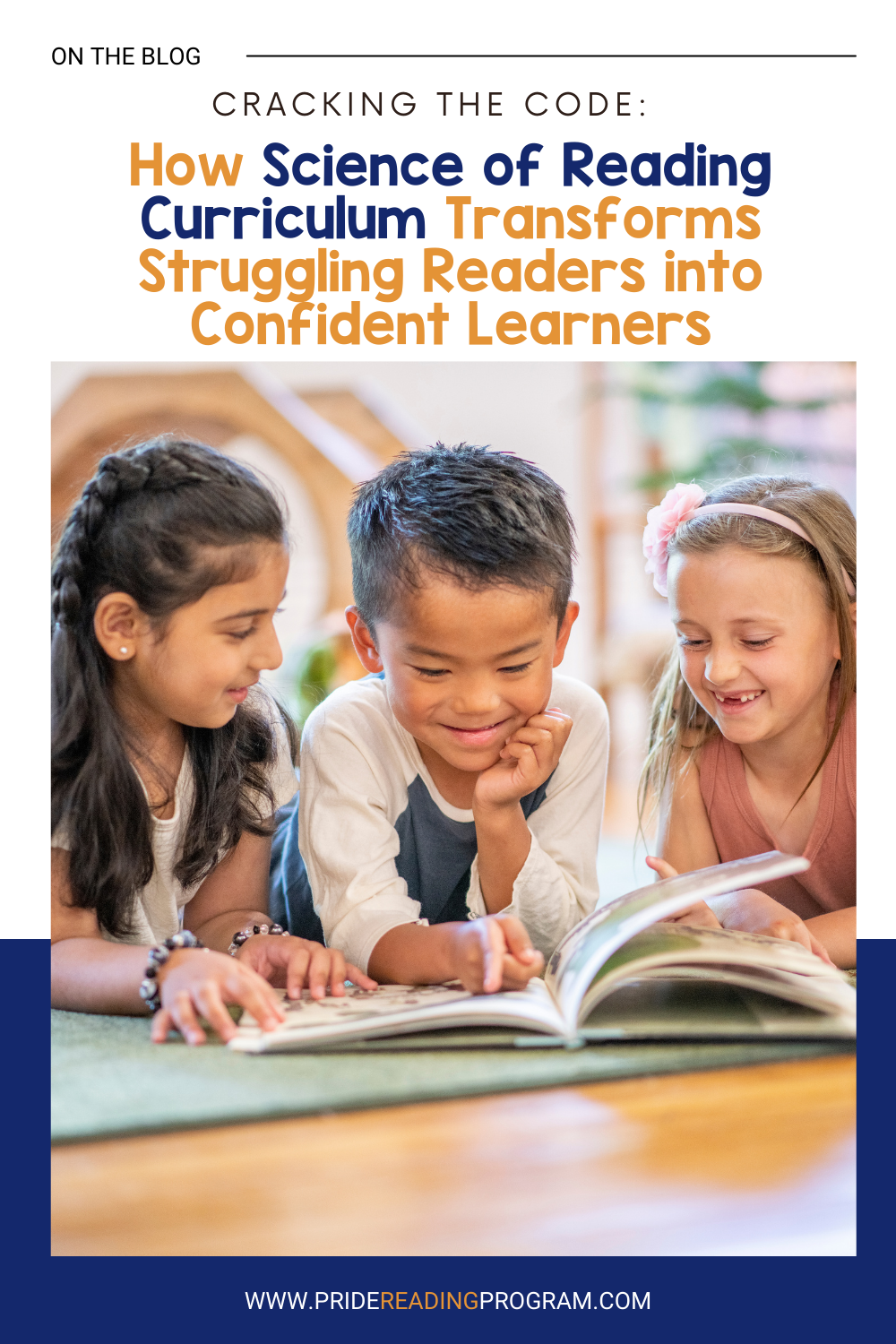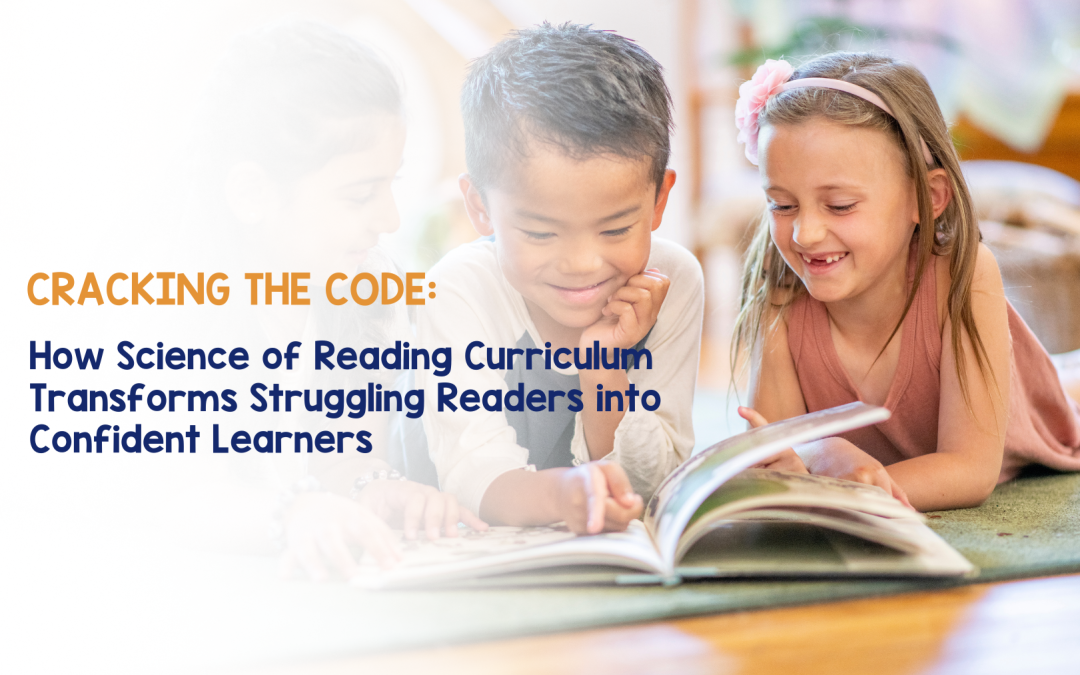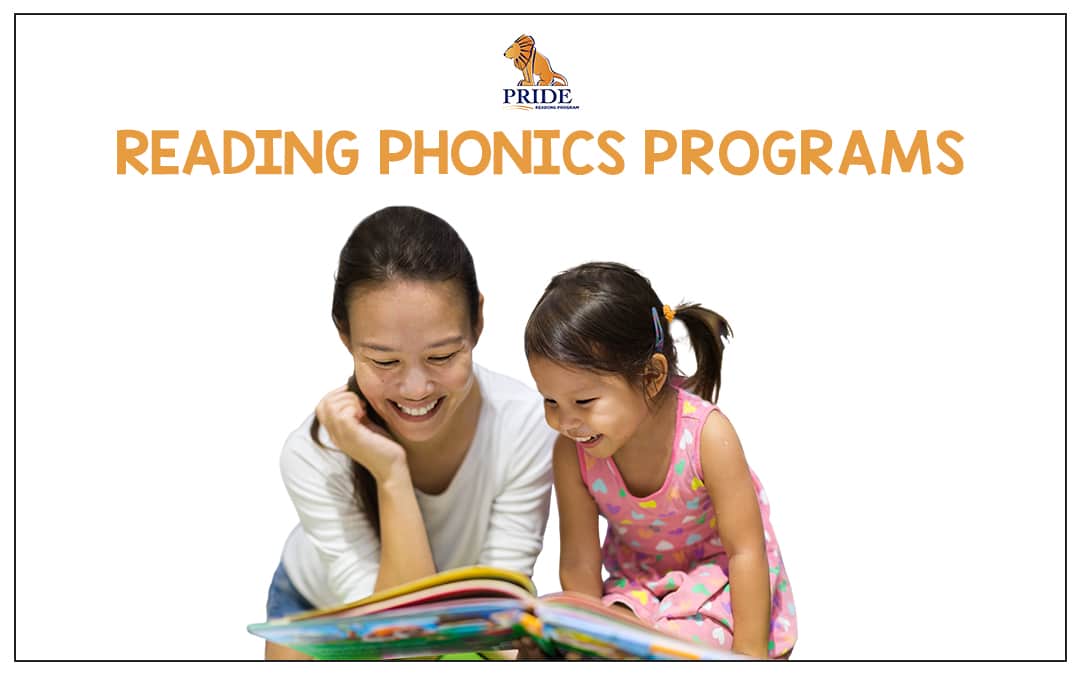Reading is not just a fundamental skill; it’s a gateway to a world of knowledge and imagination. However, for some children, the path to reading proficiency is fraught with challenges. The PRIDE Reading Program, grounded in the Science of Reading, is transforming the way we support young and early readers, turning struggling students into confident, proficient learners with an easy to use Science of Reading Curriculum.
The Struggle is Real
Most children begin their reading journey by the age of seven. However, this skill development doesn’t always follow a straightforward path. For various reasons, including learning differences like dyslexia, many children need additional support to grasp the complexities of reading. Early intervention through a science of reading curriculum can significantly impact a child’s lifelong learning journey.
What is a Reading Phonics Program?
The primary focus of reading phonics programs is education. Although programs can vary, many top programs offer both general and specific support. This means that these programs will provide a general level of education when students are learning reading. However, these programs can go well beyond that.
Specific approaches to reading education are more beneficial when students have additional needs. Many parents and teachers explore these reading programs for struggling readers who need additional guidance. For example, a child that is learning to read with dyslexia may benefit from additional education and support that better aligns with their needs in particular.
Similarly, children who struggle with one aspect of reading can gain the support they need in these programs to give them a well-rounded understanding of reading and language. While they can work as reading programs for struggling readers, reading phonics programs can realistically benefit any child that is learning to read.
The Science of Reading
Reading phonics programs focus on phonics and the science of reading to help students gain a solid mastery of this skill. Since this is the case, they will generally focus on key elements of reading education. Most commonly, this will include early introductions to language elements, phonological and phonemic awareness, and reading comprehension. These programs can be comparable to reading programs in schools, but they generally offer more of an in-depth understanding of each lesson. These include:
1. Explicit Instruction
This means that skills and concepts are taught clearly and directly by a teacher or parent. Explicit instruction includes modeling, guided practice, and independent practice of the skill being taught.
2. Phonological Awareness
Phonological awareness is usually taught in Pre-K and Kindergarten through language play, clapping out syllables, singing songs, reading stories, and playing with rhymes. According to NELP 2010, phonological awareness is a very important predictor of later language and literacy development.
3. Systematic Phonics Instruction
Systematic Phonics Instruction is a method of teaching students how to connect the graphemes (letters) with the phonemes (sounds) using a clear and well-thought-out scope and sequence to teach children how to read and spell.
Although students may enter reading phonics programs at different levels, these programs commonly focus on following along with the science of reading. This means starting with an understanding of the letters, words, and the sounds associated with them. As students continue to progress, the focus may shift to learning to sound out words, or even more complex word dynamics, like rhyming, sentence structure, and orthographic mapping. With time, students will progress to utilizing words and language to communicate effectively, as well as understanding and retaining information from written excerpts.
Tailored Programs That Grow Alongside Young Learners
The modern classroom is a wonderful place to learn, whether students are at home or at school. However, sometimes a one-size-fits-all approach is simply not ideal for certain learners. While classroom activities often require students to follow a specific learning schedule, comprehensive reading programs can be tailored to a young learner to offer better support.
With early reading programs, students can learn on their own schedule and with access to the support they need, allowing them to progress naturally rather than being left behind. Whether a student needs phonics programs for struggling readers or simply wants an early reading program to offer additional support, these tailored approaches can work wonders.
A reading phonics program is more than just an educational tool; it’s a lifeline for young learners. These programs, suitable for traditional and homeschooled students, focus on phonics – the connection between the letters and their sounds. By bridging the gap between visual symbols and auditory representation, these programs lay a strong foundation for reading proficiency.
Learn more here:
The Science of Reading Curriculum
The Science of Reading curriculum delves into phonological awareness, phonics, fluency, vocabulary, and comprehension – the pillars of reading proficiency. These evidence-based strategies help struggling readers build strong foundations, overcome obstacles, and evolve into confident learners.
- Explicit Instruction: Clear, direct teaching is crucial. This includes modeling, guided practice, and independent skill application.
- Phonological Awareness: Essential for early language and literacy development, this involves language play, syllable clapping, and engagement with rhymes and stories.
- Systematic Phonics Instruction: This method connects graphemes (letters) and phonemes (sounds) in a structured manner, fostering reading and spelling skills.
Beyond One Size Fits All
Understanding that each child’s mind operates differently is key to the program’s success. Traditional teaching methods might not resonate with every learner. By offering specialized support, the program ensures that every student has the opportunity to improve their reading skills.
Specialized Support for Unique Minds
Understanding that each child’s mind operates differently is key to the program’s success. Traditional teaching methods might not resonate with every learner. By offering specialized support, the program ensures that every student has the opportunity to improve their reading skills.
The Benefits of Reading Phonics Programs
- A Strong Foundation: Addressing core reading elements helps students build a robust foundation for all future learning.
- Improved Confidence: Overcoming reading challenges boosts self-esteem, essential for overall academic success.
- Exposure to Diverse Methods and Materials: Tailored resources cater to individual learning styles, ensuring that each child finds a method that resonates with them.
Dive deeper into learning phonics with this fun game:
The Takeaway
The journey from a struggling reader to a confident learner is transformative. By embracing the Science of Reading, the PRIDE Reading Program is not just teaching children to read; it’s opening doors to a lifetime of learning and success. It’s time to crack the code and unlock the potential in every young reader.
Thank you for reading this post today. You might also enjoy reading:
The Science of Reading: What All Teachers Should Know
How Children Learn to Read: A Guide for Parents and Teachers
Harnessing the Power of Phonemic Awareness, Phonological Awareness, and Phonics
PRIDE Reading Program


Karina Richland, M.A., is the author of the PRIDE Reading Program, a multisensory Orton-Gillingham reading, writing, and comprehension curriculum that is available worldwide for parents, tutors, teachers, and homeschoolers of struggling readers. Karina has an extensive background in working with students of all ages and various learning modalities. She has spent many years researching learning differences and differentiated teaching practices. You can reach her by email at info@pridereadingprogram.com or visit the website at www.pridereadingprogram.com



